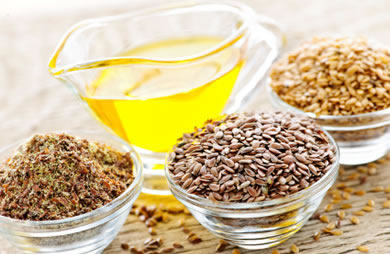|
I am in the midst of training for a number of fall races which commences with the Chicago Rock N Roll 1/2 Marathon this Sunday and ends with the Las Vegas Rock N Roll 1/2 Marathon on December 5th. Throw in the Hood to Coast Relay at the end of this month, followed by the Victoria 1/2 Marathon in October, followed by the San Antonio Rock N Roll 1/2 Marathon in November and well, let's just say I have my fair share of training cut out for me. What started out as obtaining a simple medal in New Orleans in February has led me to register for five Rock N Roll events, not only to run with other SparkPeople members, but to achieve the coveted Rock Star Medal bestowed on a runner who completes five events in a calendar year. As my long training runs have progressed from an hour a few months ago, to my last long run on Saturday, which was a tad short of three hours, I have had to depend on refueling sources during my runs to help keep my energy levels high. Over the past several years, engineered refueling sources such as Clif Shot Bloks, Accelerade and Gu have become all the rage for runners, walkers, cyclists and most other endurance athletes for that matter. Just pick up any runner's magazine and you will see countless advertisements for these products. Not only do these products offer the endurance athlete convenience, but their primary purpose is to offer a healthy dose of carbohydrates in a small package. Some products even go so far as offering protein and electrolytes, such as sodium and potassium, in addition to the carbohydrates. Just like every runner cannot wear the same running shoe, the same can be said for refueling sources. If you were to ask an experienced seasoned runner about Shot Bloks, Sports Jelly Beans or Gu, they may sneer at the mere silliness of engineered refueling products--after all, pretzels, Oreos, and even Skittles have been used for years by endurance athletes for refueling. And who can knock the cost, for just a few cents you can receive the same benefits that the so-called more expensive engineered foods offer, but at a fraction of the cost. So you may be wondering if refueling is necessary for you as a runner? Let me start by giving you a little background on why endurance runners need refueling sources on long runs and what they do to help us become more efficient runners. The long run is the most important training run for an endurance runner. While speed work and hill work are important in the development of running economy, it's the long, slow distance run which allows our bodies to develop the glycogen stores within the muscles and liver, in addition to conserving the glycogen we currently have. When we are running at a moderate pace, the body utilizes approximately 50% of the energy it needs from glycogen, or stored glucose in the muscles and liver. When you begin to deplete your glycogen stores, your body becomes more dependent on glucose in the bloodstream to help fuel your run. Remember too, that your brain cells can only utilize carbohydrates for energy, so consuming this nutrient on your long runs will also help with mental stamina. Think of these glycogen stores like a gas tank in your car. As you travel down the road your car uses the gas to get you to where you need to go. If you do not refuel when your gas light comes on, eventually you are going to run out of gas and you'll be left on the side of the road waiting for someone to bring you more fuel. Well, same is true when you are doing an endurance run. The body can only store so much glycogen, regardless of the amount of training one does. While training can help make your gas tank (AKA glycogen stores) bigger, you can only increase the size so much. In other words, we can only store a limited supply of glycogen, therefore when we start to deplete the stored glycogen, this is where refueling becomes necessary. However, please note that you do not want to allow your glycogen stores to become too depleted before you start refueling or else you may bonk, also known as hitting the wall.The body cannot turn fat into energy at a fast enough rate therefore, without enough glucose to supply your muscles, you will have no choice but to stop running. This is why timing is of the essence. Most individuals can get by on just water or an electrolyte drink for most runs under an hour. After that point you will want to look at refueling with food or a sports drink. According to Sports Registered Dietitian Nancy Clark, in her book, Nancy Clark's Sports Nutrition Guidebook, consuming 25g-60g of carbohydrates or roughly 100 calories to 250 calories PER hour during your run should suffice. Although this may seem like a lot of calories, now is not the time to worry about consuming these additional calories. Your body needs the fuel to get you through your training so that you have the energy to complete your workout. With the average runner expending between 90-110 calories per mile, running for a good 10 miles and up will require you to consume these extra calories just to keep you from hitting the wall. I personally use engineered products on my runs and the biggest reason is, the convenience factor. I can pop three bags of Sports Jelly Beans in my SPIbelt and be on my way. Just know that these products whether Gu, Shot Bloks or Sports Jelly Beans require that you take water with them in order to speed absorption within the gut. So much sure you have access to water if you choose to use these products. Check the label to determine how many grams of carbohydrates are in each serving of the refueling source you use so that you bring the appropriate amount with you on your training run. The standard recommended time to start refueling is anywhere from 30-45 minutes into your run and then roughly every 15 minutes afterward. For example the Sports Jelly Beans contain roughly 24 grams of carbohydrates for each bag which means I start using them 40 minutes into my run and then I consume a few beans every 15 minutes until I am done with my run. As with everything else with running, practice is essential in determining the best refueling source and timing for you. You want to be especially mindful of any side effects you may have with the products you have chosen. Most endurance races supply their runners with a refueling source on the course, however, if the source being offered is not one you have practiced with, now is not the time. You want to stick with what you have used in your training runs. In the future, if you want to use the same product so that you do not have to carry any with you during the race, contact the race director and see if he/she can tell you what product they plan to use. The earlier you start practicing, the better prepared you will be when it comes to your decision as to whether to stick with your own or try using the one the race will carry. I will add that I have tried using the sports drinks such as Accelerade and Cytomax, but I did not fare well with these products as they gave me a terrible bout of runner's diarrhea. I have since learned that due to the high concentration of sugar and the quick gastric emptying of the liquid product, this can be a common issue for many runners. Once again, this is why you must practice with the product you plan to use. Do you use an engineered refueling source such as Gu or Cytomax, and if so do you feel they help? Which one is your favorite? Would you be open to using regular food as a refueling source? Resources: Nancy Clark's Guide to Sports Nutrition and Endurance Sports Nutrition by Suzanne Girard Eberle MS, RD |
Popular EntriesRelated Entries
More From SparkPeople
|



.png)




.png)












.jpg)

.jpg)